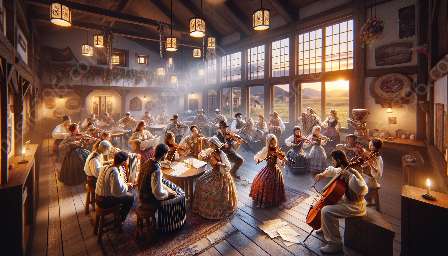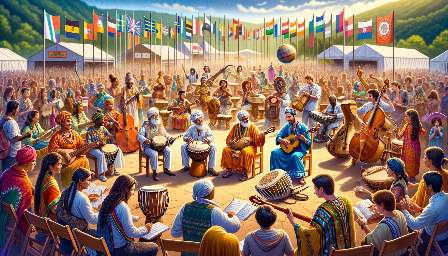North American music is a dynamic and diverse tapestry that has been profoundly shaped by the art of improvisation. From the sultry sounds of jazz and the emotive melodies of blues to the vibrant rhythms of indigenous music, improvisation has played a central role in the development and evolution of North American musical traditions. This article will explore the rich history and cultural impact of improvisation in North American music, as well as its influence on world music.
The Roots of Improvisation
Improvisation has deep roots in North American music, with its origins intertwined in the traditions of African American music, Native American music, and European classical music. The oral tradition of passing down music and stories through generations has long been a fundamental aspect of indigenous music, where improvisation is an integral part of the creative process.
In the context of jazz, improvisation is often regarded as the spontaneous creation of musical ideas within a predefined harmonic and rhythmic framework. This approach allows musicians to express themselves freely and contribute to the overall structure and interpretation of a piece.
Genres and Styles
One of the most prominent genres associated with improvisation in North American music is jazz. Emerging in the early 20th century, jazz has become synonymous with improvisational prowess, where virtuosic instrumentalists and vocalists showcase their improvisatory skills in a variety of settings, from small clubs to grand concert halls.
Furthermore, the blues, with its origins in the African American experience, has also heavily relied on improvisation as a means of personal expression and storytelling. The raw and emotive nature of blues music often lends itself to impromptu performances and heartfelt solos that captivate audiences and convey deep emotional narratives.
Beyond jazz and blues, improvisation manifests in various other North American musical styles, including folk, country, and rock. Whether through instrumental solos, vocal embellishments, or ensemble interactions, improvisation continues to shape the expressive character of these genres, providing artists with a channel for creative exploration and individuality.
Cultural Impact
The cultural impact of improvisation in North American music extends far beyond the realm of musical performance. Through its ability to transcend linguistic barriers and foster shared emotional experiences, improvisation has become a potent tool for intercultural exchange and understanding. It has facilitated collaborations between musicians from diverse backgrounds and has served as a bridge between traditional and contemporary musical expressions.
Moreover, the improvisational spirit that permeates North American music has resonated globally, influencing musicians from around the world and inspiring the incorporation of improvisatory elements into various musical traditions. As a result, the dynamic and expressive nature of improvisation has contributed to the rich tapestry of world music, enriching it with spontaneity, creativity, and cultural exchange.
Continuing Evolution
As North American music continues to evolve, improvisation remains an essential component of its artistic landscape. The fusion of diverse cultural influences and the ongoing exploration of new sonic possibilities ensure that improvisation will continue to shape the trajectory of North American music in the years to come. Its ability to adapt, innovate, and connect with audiences on a profound level ensures that improvisation will remain an enduring hallmark of North American musical traditions.
In conclusion, improvisation in North American music is a vibrant and essential aspect of its cultural heritage. From its historical roots to its contemporary manifestations, improvisation has left an indelible mark on the dynamic and ever-changing musical landscape of North America. By embracing spontaneity, self-expression, and collaboration, improvisation has not only defined the sounds of North American music but has also left an enduring imprint on the global tapestry of world music.










































